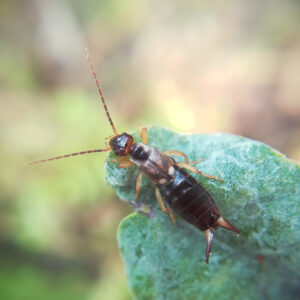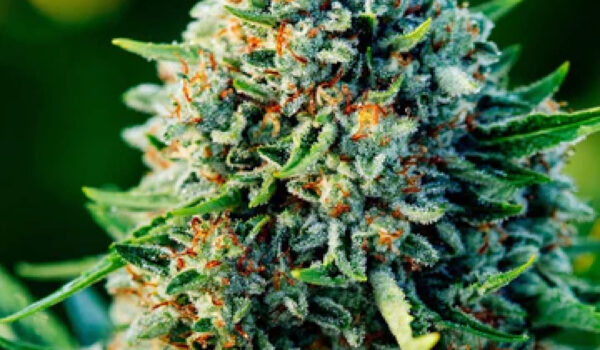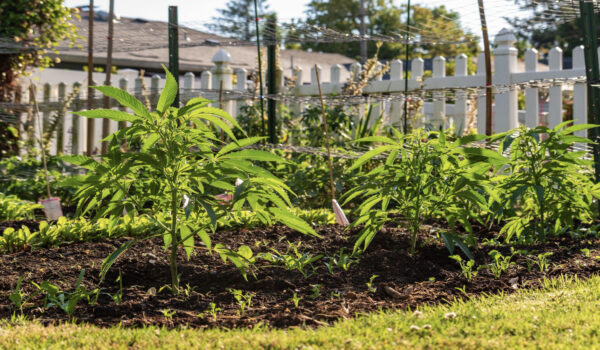by Rincon-Vitova Insectary
Earwigs

Easily recognizable pests in the garden and active at night, earwigs hide in tight, dark, moist places during the day. True omnivores, they actually are important predators of aphids, insect eggs, but will eat almost all parts of flowering plants, especially soft tissue, like newly forming buds in cannabis.
Identification
The adult body is about 3/4 inch long and reddish brown.
Most species have wings under short, hard wing covers, but they seldom fly.
Two appendages that resemble forceps at the tail end of body are used for defense, mating, and capturing prey.
Life Cycle
Females lay masses of eggs shallow in the soil during fall and winter.
Generally there is one generation a year, but females produce two broods.
Monitoring
Soft tissue damage looks similar to snail damage – Look for presence of slime trails to distinguish between the two.
To confirm that earwigs are causing the damage, go out at night with a flashlight.
Leaves will appear jagged and full of holes when it is earwig damage.
Plants will become ragged overnight, and some leaves will only be partially eaten.
A scattering of black excrement will often be present, also.
Damage often occurs after rainy weather, which forces earwigs to seek dry shelter and climb up into plants and leaves.
Cultural Practices
Reduce hiding places: loose clods of soil, boards, or dense growth of vines or weeds.
Manage irrigation/watering to reduce surface moisture (not a problem in dry areas, earwigs need moisture & shade).
Homemade oil traps: Tuna or cat food cans buried to soil surface: Add 1” oil and a drop of Fish oil or tuna oil
Equal parts soy sauce and olive or vegetable oil, put it in a small plastic container, and secure the lid. Punch holes around the top of the container, near the lid. Bury container in the soil just up to the holes.
Homemade harborage: rolled up newspaper, bamboo/arundo grass sections/ hose sections. Dump into soapy water
Dust with Diatomaceous Earth: these jagged particles cut the insects and expose to desiccation & disease. It will need to be reapplied as it gets wet.
Double sided tape or sticky pest barrier around pots to prevent movement into plants.
Apply Petroleum jelly around the stems of plants, or around a protective cup; earwigs won’t crawl over it
Alcohol acts as a surfactant, or wetting agent, it penetrates insects’ waxy exoskeleton and kills on contact. Isopropanol (rubbing alcohol) works fine, but make sure it doesn’t have additives.
Ethanol (grain alcohol) seems to work best. Comes in 70% strength or 95% strength
DIY insecticidal sprays: Mix equal parts 70% alcohol and water
Mix 95% alcohol: 1 part alcohol to 1 ½ parts water
Avoid using pesticides: Carbamates (carbaryl). These materials are highly toxic to natural enemies and pollinators.
Bio-Control: none
Summary of Strategies
Reduce habitat and manage irrigation
Oil Traps – emptied and refilled regularly
Newsprint Harborage Traps – emptied in the mornings
DE dusted around plants
Petroleum jelly barriers/glues to prevent them from reaching plants
Alcohol Sprays


